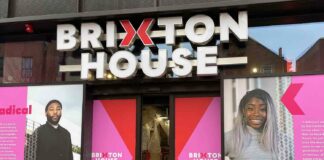Jack Howson meets Roger Robinson, the creator of an album that was powerful before Grenfell Tower and is now heartbreaking as well
Listening to Roger Robinson’s masterful concept album Dog Heart City was challenging enough in January. Across the ten tracks, which are interconnected and disorientating like an unplanned maze of streets, the protagonist is London itself.
He/she is an impossibly punishing character, one that serves up suffering and inequity to powerless people and their trapped children.
Whether at street or high-rise level, the tales are dark and relentless, acutely observed and unapologetically political.
Hearing the record again now, in the light of the Grenfell Tower fire and chaotic aftermath, is an even more heartbreaking experience.
“I’ve cried so much over the stories,” Robinson says, reflecting on the tragedy and aware that pre-echoes of this seismic event were contained within his own work.
“Those people died because they were not wealthy. They weren’t bad or criminals. They were just poor. This is what the city does to those with less. No one can make any progress in life without affordable, safe housing.”
Where his full-band project King Midas Sound modernises lovers’ rock style with hip-hop, drone, and high volume, Robinson’s solo output stays true to the socially aware dub poetry tradition of Benjamin Zephaniah, Linton Kwesi Johnson, and the like.
Dog Heart City is a dirty stream of communal consciousness, amplifying the drowned-out, ill-fated voices of morning gamblers, overnight cleaners, and single parents juggling jobs.
Its predecessor Dis Side Ah Town charted a bipolar Brixton, surveying its past and present through the prism of the 2011 riots. These are pieces of work that should be heard, and heard today. Put them on and let them reverberate.
“I think art makes its way to who needs it,” the singer, poet, playwright and cultural coordinator says. “The music will take the albums to where they need to be.
“As an artist in this time, responsibilities are placed upon us, and to completely ignore those would make you complicit. There were questions being asked of me and this is how I answered them.”
Having made South London his home for many years, Robinson is now “a kind of economic migrant” living in Northampton, another creative soul pushed into joining the exodus from our capital by rising house prices and “regeneration”.
He skewers this development and speaks directly to Brixton’s freshly painted face on Dog Heart City’s standout moment, the track New Maps:
Snap the heels off your gym shoes /
Vomit up your green juice, and burn in your hot yoga studio /
Wash the feet of a nurse who worked for 25 years keeping this community alive /
Ask her for advice on how to live when you feel her callused soles …
The best defence against gentrification, Robinson says, is to “understand the system, assert your lawful rights, counteract, collectivise, mobilise, and protest.”
Post-election, with the class gap more apparent than ever, he is predicting a widespread increase in aggressive collective action: “What’s happened in Brixton has happened in the same way everywhere, even in different countries I’ve toured in. There’s no consultation or accommodation of the needs of long-term residents. It’s developed for the new people settling and that’s the only priority.
“My favourite haunt used to be Twin Barbers [Coldharbour Lane and Brixton Station Road], a colourful, lively place. There was an old woman who’d play blues by humming through a comb with foil while selling her outsider art, felt pen pictures of birds. You’ll never see that type of stuff in Brixton ever again.”
Roger Robinson’s Dog Heart City is available digitally via Jahtari. A vinyl edition is coming soon.















